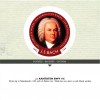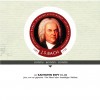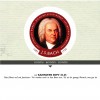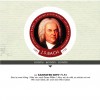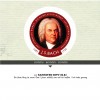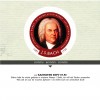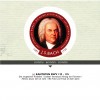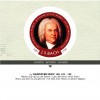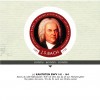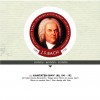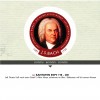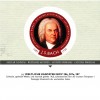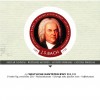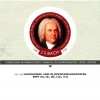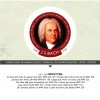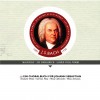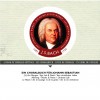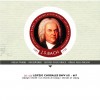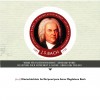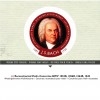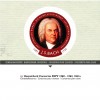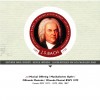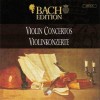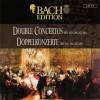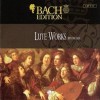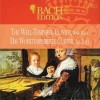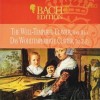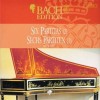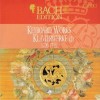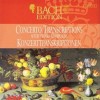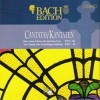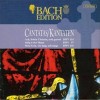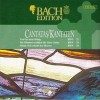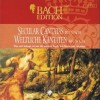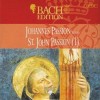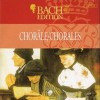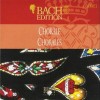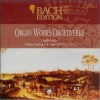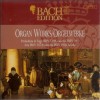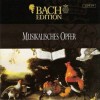Biography
Johann Sebastian Bach was born on 21th of March in 1685. He was a son of Johann Ambrosius, court trumpeter for the Duke of Eisenach and director of the musicians of the city Eisenach in Thuringia. For years, members of the Bach family throughout Thuringia had positions such as organists, city instrumentalists and cantors, as well as the family name was used for a wide reputation if talking about musical talent.
The family lived in Eisenach, in a fairly spacious house directly above the city center, with rooms for student musicians, and large stocks of grain. (A pleasant and informative "Bach Haus" Museum in Eisenach, not meant to be the original home of the family). Here young Johann Sebastian was taught by his father to play the harpsichord and violin. He had also been initiated in the art of organ playing by his famous uncle, Johann Christoph Bach, who was then Georgenkirche organist in Eisenach. Sebastian was a very willing pupil and soon became extraordinarily proficient with these instruments.
At eight years old he went to the old Latin Grammar school, where Martin Luther was previously a student, he studied reading, writing, Latin grammar, and much of the Scripture in Latin and German. The boys from the school created the choir of St. Georgenkirche, which gave Johann Sebastian chance to sing in the regular services, as well as in close by villages. He was depicted as having 'extremely thin treble voice. Lutheran spirit would have been strong in Eisenach, because he was in the Wartburg Castle standing high above the city, that Martin Luther, in conceal from his oppressors, translated the New Testament into German language.
Roads are still unpaved in the smaller towns, sewage and garbage, poorly organized, and the presence of germs is not scientifically detected. Mortality had high rates as a result. At an early age Johann Sebastian lost a sister and then a brother. When he was nine years old, his mother died. Barely nine months afterwards he had his father died too.
Johann Sebastian and one of his brothers, Johann Jakob, have been taken in the house of his elder brother Johann Christoph (born 1671), who recently got married and settled in Ohrdruf, a small town about thirty miles south-east of Eisenach. Johann Christoph, a former pupil of Pachelbel, was now pretty established as an organist at St. Michaeliskirche, Ohrdruf.
Johann Christoph was an outstanding teacher - all his sons were to achieve positions of certain heights in the music, and he was a passionate student of the last songs of the keyboard.
Johann Sebastian soon settled joyfully in this home studying the harpsichord and organ with great interest under his brother, so he quickly mastered all the parts he has received. When a new organ was installed in the church of Ohrdruf, Christoph allowed his younger brother to watch its construction. He also urged him to study composition and set Bach to copying the music of German composers such as organist Jakob Froberger, Johann Kaspar Kerll and Pachelbel. Jokes tells how Christoph punished his younger brother, when he found he had copied banned music manuscripts in the moonlight, within six months, and confiscated the precious copy.
Throughout this period, Johann Sebastian attended the grammar school (gymnasium) of Ohrdruf, once a monastic establishment, which became one of the most progressive schools in Germany. He has made excellent progress in Latin, Greek and theology, and reached the top form at a very early age. Gymnasium scholars in Eisenach also were used as choir-boys, and Cantor, Elias Herda, highly valued the voice of Johann Sebastian and his music features.
Thanks to his beautiful soprano voice Johann Sebastian found a position in the choir of the rich Michaelis monastery at the city of Lüneburg, which was known to provide a free place for those of the boys, who were poor but had a musical talent. It was not clear, who had held a scholarship of those place.
In the spring of 1700 Bach went with his schoolmate Georg Erdmann, who was also joining the choral group, on the 180 miles trip from north to Lüneburg. It is not known how they traveled, but fairly the whole trip would have been made mainly on the foot, except the places where they could use the lift on the river barge or a cart of a farmer. There is no doubt that two boys would’ve been given free food and accommodation in the monasteries along their route.
When Johann Sebastian reached this northern german music center, he was well received because of his unusually beautiful soprano, and was instantaneously appointed to gather a singing group who were meant to create the 'Mettenchor' (Mattins choral group). Their obligation was to sing a lot, and Johann Sebastian accordingly had a unique opportunity to participate in choral and orchestral performance in the poorest cities of Thuringia, his homeland. He also was freely allowed to examine the fine music library in high school, including some of the best examples of church music of Germany.
The growing boy soon lost his soprano, but he was also able to make himself helpful as a violinist in the orchestra and as a harpsichord accompanist in the periods of their choir rehearsals.
During this time he was lucky to meet Georg Böhm, organist of the Johanniskirche at Lüneburg, who had been a pupil of the well-known organist Jan Adams Reinken in Hamburg, and also was a family friend of Bach in Ohrdruf. Boehm introduced him to the great Hamburg organ traditions, to which town he made several trips on foot. He also came under the influence of instrumental music of France when, through his great knowledge of the violin, he played at the court in Celle, situated 50 miles south of Lüneburg. Though it was distinctly German in its design and appearance, Celle Castle also was known as a "miniature Versailles" for rich interiors and the musical tastes suitable to that time.
When Johann Sebastian was about eighteen, he significantly enriched in these musical experiences and decided that he will try to find a work as a Thuringia organist. He was very interested in the organ under construction in the new church of Arnstadt, as well as his family members were professionally active in the area for generations, he felt a good chance of getting the post. Thus in 1702 he left Lüneburg and headed back to south.
While pending the completion of this organ in Arnstadt, Sebastian took the position of violinist in a small chamber orchestra of Duke Johann Ernst, who was the younger brother of the Duke of Weimar. At Lüneburg he had previously experienced church choral music, continuo, violin and organ playing, as well as performance and musical composition in the French style. At Weimar he came into contact with instrumental music of Italy, and acted as deputy to the old court organist, Effler, an old friend of the Johann family, thus being able to keep his organ playing in practice. His stayed there shortly to come back later.
In July 1703 Arnstadt City Council invited young Bach to test the recently finished organ of the New Church, so called as it had almost been completely restored after it was gravely damaged by fire. He impressed the Arnstadt people with a brilliant game at the dedication so much that he was instantaneously offered the post of organist on very favorable conditions.
At the end of 1703, 18-year-old Sebastian took up this post at Arnstadt, delighted with its comparatively large organ of two manuals and 23 speaking stops, and liability for providing the music for his own collection. Although this organ was not belonged to Bach, original manuals, stops and pedals of Bach’s organ are displayed in Palm Haus Museum of this pretty historic town Bach’s house where can also be seen.
In 1705, the Church Council granted Bach departing to visit the north-German city of Lübeck to listen to the grand organist Dietrich Buxtehude. In Lübeck he used every opportunity to hear Buxtehude play, and also to attend evening concerts of famous Marienkirche, at the time when Buxtehude cantatas were played at church. Bach was so captivated by these concerts, and his discussions about the art with the grand master, that he stayed in Lübeck over Christmas and left only two months later after it.
He returned to Arnstadt afterwards that in three months, having also visited Reincken in Hamburg and Böhm in Lüneburg on a path full of new ideas and enthusiasm that he immediately put into his playing practice. Nevertheless, the congregation was completely surprised and shocked by his new musical ideas: there was considerable confusion throughout the singing of chants, caused by his irrelevant ornaments and surprising variations which were of melody and confused the assembly.
The Church Council decided to reprimand Bach on his strange sounds throughout the services, and they also asked to explain the unauthorized extension of his leave in Lübeck. Bach did not try to justify himself before what must have seemed to him a group of like-minded and conservative old men, but the Council, knowing how skilled his playing was, decided to treat young and rapidly organist condescendingly.
Nevertheless, new conflicts soon emerged, when Bach, referring to the paragraph in his contract, refused to work more with the undisciplined choral group boys, which he was obliged to train pleasing the Council economy. This Council further reprimanded him, and also said about complaint that Bach entertained strange “damsel” to music in the church organ loft. The young lady was possibly his cousin, Maria Barbara, whom he afterwards married.
Thus, what was interesting and promising start in Arnstadt, now turned into accusations and disputes. There was no doubt that Bach decided it would be better for him to look around for somewhere new.
When 1706 was ending, he heard that the main organist in Mühlhausen died. As he knew that Mühlhausen had long musical practice, he applied for the post, and after another very successful plays at the impressive cathedral-like building of St. Blasius Church on the day of Easter Sunday in 1707, he was accepted again on very favorable conditions. So in June 1707 he returned the keys of his office to the Council Arnstadt and left with a few things to Mühlhausen.
Bach arrived in Mühlhausen, a small Thuringian city proud of its very old foundations and liberty, to take the post of organist in the city. Unfortunately, a quarter of the city had lately been devastated by fire, so it was pretty hard to find suitable accommodation, and he was thus forced to pay stiff rents. Nevertheless, soon after his arrival, he brought his cousin Maria Barbara Arnstadt, and on 17th of in 1707 he married her at the church in the charming Dornheim village. Thus Barbara Maria came became a part of his husband musical family, as her father was the organist at Guerin.
At that moment Bach had high ideals for the church music in Germany, for a start he began to organize the fairly poor Mühlhausen facilities, also he began to make a great collection of the best German music available, comprising some of his own works, and set about preparing the orchestra and choir re-created for music playing.
The first result of this hard work was his cantata Gott 'Mein König IST (BWV 71), shown in up till now in a spacious Marienkirche to celebrate the Town Council inauguration in February 1708. This success gave Bach the courage to put in a long and detailed report, proposing a complete improvement and upgrade of the organ, situated in St-Blasiuskirche. Council agreed to renovate and repair it, and Bach was tasked to supervise the work. So he became not only a brilliant player, but also an expert on the construction of organs.
Yet, before the organ was completed, the religious disputes arose in Mühlhausen between orthodox Lutherans, also known for their music loving, and Pietists, who were strict Puritans, and did not trust the art and music. Bach was feared the growing influence of the latter, in addition to the fact that his immediate superior was Pietist. Music in Mühlhausen became in a state of decay, and so Bach once again started looking for more promising opportunities.
Former contacts in Weimar at that time were useful. Thanks to it The Duke of Weimar offered him a position among his musicians of the Chamber, and on June 25, 1708, Bach sent his paper of resignation to the authorities at Mühlhausen, in which he very diplomatically said that he found not only difficult to keep his wife on a small salary agreed on his arrival, but that he sees no chance to achieve their ultimate goal, namely the establishment of appropriate music of the church for the glory of God. The Council had no choice but to allow his departure. Nevertheless, the situation has been concluded quite amicably and Bach was asked to continue to observe the renewal of bodies of St. Blasiuskirche. This he did, and after some time in 1709 he came to the opening of its first performances.
Weimar was a fairly small city with only 5000 inhabitants, but Bach was to meet with some very cultured people.
Bach’s double position as a member of chamber orchestra and organist at the court offered him many chances for development.
Court Orchestra included about 22 players: a compact string group, a bassoon player, 6 or 7 trumpets and drums. Function of Bach in the orchestra was mainly as a violinist, but he also played the harpsichord, and occasionally arranged and wrote some of his works. As was the custom in most courts of 18th century, the musicians also spent part of their time engaged in household and family responsibilities.
In 1714 Bach became the head of the orchestra, and was second only to the frail and old Capellmeister Johann Samuel Drese, whose duties he gradually was taking over.
As court organist, Sebastian Bach had succeeded Effler, musician with some standing. The organ was new and not as big as one that was at Arnstadt. After several years, Bach said that it was too inadequate and should be restored. So it was rebuilt with great expenses in accordance to Bach’s plans: proof of the high regards that the Court had for his abilities as of organist and organ construction expert.
Throughout this period he wrote his compositions mainly for the organ and quickly became known throughout the country as one of the greatest German organists. Organ disciples came to him from everywhere, and he was asked to test and devote many organs in various cities. His tests were very careful and critical. He said, for fun, that he must first know which organ has a good light, and, pulling out all the stops, he tried to make the biggest sound possible, often making organ builders feel the fright. He, as a rule, liked to end the trial with improvising a fugue and prelude: prelude to test the power of organ, and fugue to test its clarity for counterpoint. He had invented so good fingering that he could master the most complicated parts with perfect ease (using 5 fingers, but not the normal 3). He was able to make passages on the pedals, and that would make a problem for a lot of good players on the keyboard.
During a visit to Galle in 1713, when he presented the court with the cantata (probably, BWV 21), he was invited to become an organist as a successor to Zachau, eminent composer, famous as a teacher of young Handel. Yet, the conditions and wages were not enough for his growing family, he was forced to abandon this position.
Throughout a visit to Dresden Bach was invited to compete in the contest with a visit to the French organist Louis Marchand, considered one of the best in Europe. But on the day appointed for the contest, the Marshal decided to withdraw the date and took the fastest available coach in his way back to France. And so Bach gave an impressive solo in front of the assembled audience and judged who create themselves as the best organist of the day.
Bach made some very good friends in Weimar, among which was a distinguished scholar and scientist Johann Matthias Gesner, who have expressed with great eloquence his admiration for the genius of the composer. Bach was also a frequent visitor of the nearby 'Rote Schloß', the home of the Duke’s widow and both of her sons, who loved music. His interest was in the new Italian style of music, which then had a rage among europeans, especially to name one of their main representatives - the Venetian composer Vivaldi. Bach and his cousin Johann Georg Walther rewrote some Italian instrumental concertos for keyboard instruments.
In 1717, the hostility broke out between the Duke of Weimar at the household of Wilhelmsburg and Ernst August, his nephew in the “Rote Schloß”. Therefore, the musicians of first home have been banned to fraternize with those of the second. Bach did his best to ignore what took place in the end, simply an extension of private disputes. The atmosphere was not so nice. Besides, the ancient Capellmeister died, and Bach was transferred to the post in favor of the mediocre son of Capellmeister. At the same time, Bach was bitterly disappointed because he did recently most of the work for Capellmeister, and confidently had expected to be appointed to the position.
Thought the instrumentality of Duke Ernst August Bach was submitted to the Court of Anhalt-Cöthen, and consequently he was offered the post Capellmeister, which he immediately accepted. This angered the Duke of Weimar, so that when Bach put it in a respectful demand for his release, he was arrested and placed in a local prison. Nevertheless, a month afterwards he was released and gave unwilling permission to leave his post. Throughout this enforced rest, Bach usually used their time effectively and organized cycle of organ choral preludes for the whole year, and published afterwards as
“Orgelbüchlein”.
Bach arrived at the small Court of Anhalt-Cöthen and occupied position of Capellmeister, the uppermost rank given to a musician throughout the baroque. His master was the young Prince Leopold of Anhalt-Cöthen, about twenty-five years, who was the son of the Calvinist. As the Calvinists were hostile to the attractions of the Lutheran liturgy, there was no church music in Cöthen. Nevertheless, the young prince religious faith forbad him to take pleasure in the fun and cultural way of life with a complete secular cantatas and instrumental music featuring the latest styles and fashion. Leopold had already spent three years (1710-13) making the Grand Tour of Europe, first in Holland and England, through Germany to Italy, and then back to Vienna. That is how he became familiar with the newest European ways of fashion in music.
The juvenile prince stretched the restricted budget of his miniature Court to provide an orchestra of 18 players, all chosen for their excellent musical standards from all over the country, some from as far away as Berlin. In fact, it was throughout the Grand Tour of Prince in 1713, that news came to him of a golden opportunity: when Wilhelm The First of Prussia came to power, he disbanded the court Capelle of his father Capelle, and Prince Leopold managed to lure some of the greatest musicians from Berlin to Cuthen. He had developed musical tastes well, having widely traveled, especially to Italy, where he studied secular music with huge interest, he returned from Italy with intension to raise the level of German secular music to the same high level.
In contrast to most of the princes of that time, he was a player of significant knowledge of the harpsichord, violin and viola da gamba. Unlike the present etiquette of the court, he played fairly freely and informally with his court musicians, treating them solely as equals. Soon he became affable with his new Kapellmeister, with great respect for him, and often asked his advice on various issues.
At that period of time Cöthen life was easy-going and pretty informal. In such a happy atmosphere Bach was completely devoted to music. During these days he wrote much of his chamber music; keyboard music, sonatas, violin concertos, sonatas, etc.
When the Prince was in his journeys, Bach and a few of the Court musicians (including an original folding-harpsichord and other instruments) were to accompany him while his extensive travels. They visited a city of Carlsbad twice, which was a meeting place for European aristocracy, firstly in 1718 and secondly in the summer of 1720. When Bach was returning from this second visit he received a grave shock. Maria Barbara, his wife, who was perfectly healthy three months earlier, died and had been buried in his absence, thereby leaving 4 motherless children.
After 2 months Bach visited the city of Hamburg and became interested in the new vacant post of organist in the church of Jakobskirche. Latter contained the famous organ of Arp Schnitger with 4 manuals and 60 stops. However, Bach left Hamburg before the audition. Presumably the reason was that the proposed conditions there didn’t suit him.
Bach moved to Cöthen and continued to work. He was asked there to compose and also to perform cantatas for the birthday of Prince and the celebration of New Year; 2 each time, 1 sacred and 1 secular. There were singers to perform these compositions, and one of them, named Anna Magdalena, daughter of Wilcke J.C., Field and Court-Trumpeter at Weißenfels, once attracted attention of Bach with her wonderful soprano voice. At the end of 1721 Bach and Anna Magdalena married, he at the age of 36, she 20.
Anna Magdalena liked Bach's children. She was a good housekeeper, and often took a lively and active interest in Bach’s works, often helping him by neatly copying out his manuscripts. For the 28 years of their happy marriage, there were born 13 children, though only few of them eventually survived.
A week after their wedding, the Prince married too. It was an unfortunate event for Bach, as the new Princess wasn’t in favor of husband’s musical activities. So by constant exerting pressure (like Bach wrote in his letter), she managed to 'Make the musical inclination of the said Prince somewhat luke-warm'.
Anyhow, now Bach needed to take care about his growing sons. He wished to make a good conditions for them to have a good education. But Cothen, a city without facilities and cultured atmosphere of a larger city never had a university.
Bach decided again to look for something new. These circumstances obviously led Bach to remember an invitation to create a work that now is known as the Brandenburg Concertos. At the day of the dedication, which was on 24th of March 1721, Bach had met Margrave of Brandenburg and also had been invited to present some orchestral music.
Bach intended to visit Berling by his own to firstly perform these work. But the score has a few musicological errors – as Bach dedicated his music seriously to a dignitary and thought about perspective enployment, he could hardly permit performing. IT is indicated by the missing middle pages in the work of the third concerto. His contemporaries were frequently noted as he wouldn’t permit performers to put in their own elaborations and trils, as often he knew nothing about the performer and his capabilities.
In addition to regular concerts payed by the authorities, Bach and his choir did not refused to underwork by performances at funerals and weddings. It is for these cases at least six motets were composed. When Bach was working in the church, he often performed motets of the Venetian school of composers and such Germans as Schutz - they gave him the impetus to write his own motets.
By the end of 1720 Bach amassed a large repertoire for performances in churches of Leipzig, but over time he became more fond of secular music. In March 1729 he was appointed head of the Musical College - secular ensemble, organized as early as 1701 by his old friend Georg Philipp Telemann. Then it was common practice, and similar ensembles were often created by the gifted and active students, defining the direction of a musical society. Twice a week throughout the year Musical board arranged two-hour concerts in Zimmerman's coffee house, where the owner specially allocated a large room and a few tools. Many of the works of Bach 1720-1750 period were written precisely on the purpose of performance in Zimmerman's coffee house - for example clavier book «Clavier-Ubung» and "Coffee Cantata" and many concerts for harpsichord and cello. It is also necessary to mention the Mass in B minor, for which he wrote during this period of «Kyrie» and «Gloria».
Finally, Bach had made the post of court composer - most likely, he often mentioned this work in disputes with the city authorities, and so they finally managed to agree with them.
In 1747 Johann Sebastian had been in court of Frederick II, King of Prussia. One day the king gave him a musical theme and immediately asked him something to write. In addition to flawless improvised three-part fugue, Bach later wrote a series of variations, consisted of canons, richercars and a trio based on the basic theme that had the name "Musical Offering".
Bach also had a series of "Fugue Art", which consisted of 18 complex fugues and canons that were based on a simple theme. He used all the techniques and tools of writing polyphonic works in it, despite the fact that the cycle was not completed by Bach.
Chorale prelude for organ "Here I stand before thy throne» ( «Vor deinen Thron tret ich hiermit») was the last piece of Bach - he dictated it to his son-in-law while lying on his deathbed. Now this prelude is often used when "The Fugue Art” ends.
It is known that over time Bach was loosing his ability to see. He had to dictate his musical compositions to his son-in-law, AltNiccol. In 1750 Bach visited John Taylor, an ophthalmologist from England (who is onsidered as a charlatan by many modern scholars). He tried twice to cure it surgically, but Bach had remained blind. Once he suddenly regained his sight on July 18, but on the same evening he suffered a stroke. Ten days later he died - some believe, because of complications after surgery. His fortune includes 3 violins, 3 violas, 5 harpsichords, 2 cello, lute and spinet, 2 lute-harpsichord, viola, Gamba and 52 sacred books, was appreciated in slightly more than 1000 thalers.
During his life Bach composed more than 1000 works. He was a very sociable person and maintained relationships with university professors in Leipzig, court musicians from Dresden, Berlin and other cities, he has collaborated with the poet under the pseudonym Pikander. He and his first wife, Anna Magdalena often hosted family members, musicians and friends from all over Germany in their home.
Bach was buried near the church of St. Thomas, where he worked for 27 years. After some time the tomb was lost, and only in 1894, he was reburied after it’s accidental discovery during construction work.












![Essential Organ [CD 1 of 2]](http://static.classicalm.com/repository/collection-cover/small/1307-img1359479519576972.jpg)
![The Flute King - Music from the Court of Frederick the Great [CD 2 of 2]](http://static.classicalm.com/repository/collection-cover/small/1301-img1357990267809484.jpg)


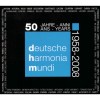





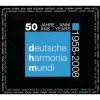



![Russian legends - David Oistrakh [20 CD]](http://static.classicalm.com/repository/collection-cover/small/267-img1318418713553266.jpg)
![Russian legends - Leonid Kogan [10 CD]](http://static.classicalm.com/repository/collection-cover/small/269-img1318707830156876.jpg)
![Russian legends - Gidon Kremer [10 CD]](http://static.classicalm.com/repository/collection-cover/small/273-img1318873589669975.jpg)
![Russian legends - Mstislav Rostropovich [10 CD]](http://static.classicalm.com/repository/collection-cover/small/275-img1319023256353734.jpg)
![Russian legends - Evgeny Kissin [9 CD]](http://static.classicalm.com/repository/collection-cover/small/265-img1318196902541222.jpg)
![Steinway Legends - Alfred Brendel [2 CD]](http://static.classicalm.com/repository/collection-cover/small/229-img1316811188196246.jpg)

![Steinway Legends - Martha Argerich [2 CD]](http://static.classicalm.com/repository/collection-cover/small/237-img1316861995833914.jpg)
![Steinway Legends - Wilhelm Kempff [2 CD]](http://static.classicalm.com/repository/collection-cover/small/247-img1316898358255855.jpg)


![Deutsche Grammophon Classic Gold [CD 1 of 3]](http://static.classicalm.com/repository/collection-cover/small/1314-img1361380277394437.jpg)
![Top 100 der Klassik [CD 2 of 5]](http://static.classicalm.com/repository/collection-cover/small/1365-img1372592354874210.jpg)
![Deutsche Grammophon Classic Gold [CD 2 of 3]](http://static.classicalm.com/repository/collection-cover/small/1315-img1361382127512512.jpg)
![Top 100 der Klassik [CD 3 of 5]](http://static.classicalm.com/repository/collection-cover/small/1366-img1372593555699508.jpg)
![Deutsche Grammophon Classic Gold [CD 3 of 3]](http://static.classicalm.com/repository/collection-cover/small/1316-img1361384204300956.jpg)
![Top 100 der Klassik [CD 4 of 5]](http://static.classicalm.com/repository/collection-cover/small/1367-img1372594763111487.jpg)
![Top 100 der Klassik [CD 5 of 5]](http://static.classicalm.com/repository/collection-cover/small/1368-img1372595835213275.jpg)


![Baroque Adagios [CD 2 of 2]](http://static.classicalm.com/repository/collection-cover/small/1325-img1362237166532140.jpg)




![Baroque Adagios [CD 1 of 2]](http://static.classicalm.com/repository/collection-cover/small/1324-img1362233059780943.jpg)

![Christmas Adagios [CD2 of 2]](http://static.classicalm.com/repository/collection-cover/small/1221-img1354501874563438.jpg)
![Christmas Adagios [CD1 of 2]](http://static.classicalm.com/repository/collection-cover/small/1219-img1354498625885822.jpg)


![Het Historische Orgel in Nederland [CD 19 of 20]](http://static.classicalm.com/repository/collection-cover/small/1017-img1343983488359202.jpg)




![Nouvelles Couleurs de l'Orgue [CD 1 of 2]](http://static.classicalm.com/repository/collection-cover/small/1023-img1343994250261534.jpg)
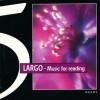






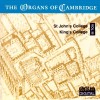

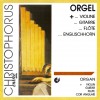
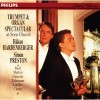


![The Top 100 Masterpieces of Classical Music 1685-1928 [CD1of10]](http://static.classicalm.com/repository/collection-cover/small/1353-img1372437248611603.jpg)
![The Top 100 Masterpieces of Classical Music 1685-1928 [CD2of10]](http://static.classicalm.com/repository/collection-cover/small/1354-img1372438348577851.jpg)


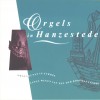



![Great European Organs. 45-Roger Sayer [Hallgrímskirkja Reykjavík]](http://static.classicalm.com/repository/collection-cover/small/929-img1342001970694360.jpg)

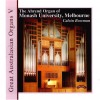
![Het Historische Orgel in Nederland [CD 11 of 20]](http://static.classicalm.com/repository/collection-cover/small/1001-img1343401451413099.jpg)
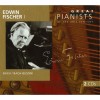
![Great European Organs. 63-Nicolas Kynaston [Megaron, Athens Concert Hall]](http://static.classicalm.com/repository/collection-cover/small/965-img1342703754192433.jpg)

![Great European Organs. 12-John Scott Whiteley [St Bavo Haarlem]](http://static.classicalm.com/repository/collection-cover/small/863-img1340965531370432.jpg)


![Arp Schnitger Organs In Nederland [CD 2 of 2]](http://static.classicalm.com/repository/collection-cover/small/783-img1339952433311111.jpg)

![Het Historische Orgel in Nederland [CD 7 of 20]](http://static.classicalm.com/repository/collection-cover/small/993-img1343312665746579.jpg)

![Great European Organs. 46-Barber Graham [Jacobijnerkerk Leeuwarden]](http://static.classicalm.com/repository/collection-cover/small/931-img1342087331315201.jpg)



![Het Historische Orgel in Nederland [CD 12 of 20]](http://static.classicalm.com/repository/collection-cover/small/1003-img1343477080386894.jpg)


![Great European Organs. 67-Michal Novenko [Povyseni sv.Krize, Litomysl]](http://static.classicalm.com/repository/collection-cover/small/973-img1342720942767973.jpg)

![Great European Organs. 24-Dietrich Wagler [Freiberg Dom]](http://static.classicalm.com/repository/collection-cover/small/887-img1340993647855236.jpg)


![Art of Organ Building - Van den Heuvel organs (various) [CD 1 of 2]](http://static.classicalm.com/repository/collection-cover/small/785-img1339955940346442.jpg)

![Het Historische Orgel in Nederland [CD 8 of 20]](http://static.classicalm.com/repository/collection-cover/small/995-img1343315774596649.jpg)

![Great European Organs. 51-Peter King [Bath Abbey]](http://static.classicalm.com/repository/collection-cover/small/941-img1342340028618105.jpg)


![12 Organs of Edinburgh [CD 1 of 2]](http://static.classicalm.com/repository/collection-cover/small/765-img1339682459670024.jpg)
![Het Historische Orgel in Nederland [CD 13 of 20]](http://static.classicalm.com/repository/collection-cover/small/1005-img1343482337542284.jpg)




![Great European Organs. 30-Graham Barber [Altenberg Cathedral]](http://static.classicalm.com/repository/collection-cover/small/899-img1341418069298272.jpg)




![Het Historische Orgel in Nederland [CD 9 of 20]](http://static.classicalm.com/repository/collection-cover/small/997-img1343318132824903.jpg)

![Great European Organs. 55-Konstantin Reymaier [St Jakob Hamburg]](http://static.classicalm.com/repository/collection-cover/small/949-img1342357797819665.jpg)
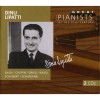
![Great European Organs. 03-Graham Barber [Bolton Town Hall]](http://static.classicalm.com/repository/collection-cover/small/845-img1340485309529347.jpg)

![Het Historische Orgel in Nederland [CD 14 of 20]](http://static.classicalm.com/repository/collection-cover/small/1007-img1343562180525462.jpg)


![Het Historische Orgel in Nederland [CD 4 of 20]](http://static.classicalm.com/repository/collection-cover/small/987-img1343218347104706.jpg)

![Great European Organs. 33-Matthias Eisenberg [St Goergenkirche Rotha]](http://static.classicalm.com/repository/collection-cover/small/905-img1341488507625287.jpg)
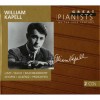


![Het Historische Orgel in Nederland [CD 10 of 20]](http://static.classicalm.com/repository/collection-cover/small/999-img1343399062491791.jpg)

![Great European Organs. 62-Johannes Unger [St Thomaskirche Leipzig]](http://static.classicalm.com/repository/collection-cover/small/963-img1342699534843225.jpg)
![Russian legends - Daniel Shafran [7 CD]](http://static.classicalm.com/repository/collection-cover/small/277-img1319146356180506.jpg)

![Great European Organs. 06-Keith John [Notre Dame des Neiges]](http://static.classicalm.com/repository/collection-cover/small/851-img1340531608796213.jpg)

![Arp Schnitger Organs In Nederland [CD 1 of 2]](http://static.classicalm.com/repository/collection-cover/small/781-img1339948464135341.jpg)
![Het Historische Orgel in Nederland [CD 15 of 20]](http://static.classicalm.com/repository/collection-cover/small/1009-img1343566837112912.jpg)

![Het Historische Orgel in Nederland [CD 5 of 20]](http://static.classicalm.com/repository/collection-cover/small/989-img1343295469656644.jpg)

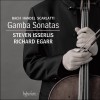












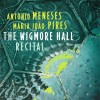
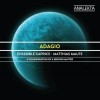







![Sviatoslav Richter - The Teldec Recordings [CD 1 of 3]](http://static.classicalm.com/repository/disk-cover/small/1869-img1344933724580104.jpg)
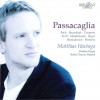




















![Cecilia Bartoli – Sospiri [CD 2 of 2]](http://static.classicalm.com/repository/disk-cover/small/3054-img1375438347839669.jpg)


![Pablo Casals - The Complete Published EMI Recordings (1926 - 1955) [CD9of9]](http://static.classicalm.com/repository/disk-cover/small/3594-img1404566163886690.jpg)



















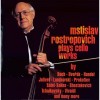






![The 100 Most Beautiful Melodies [CD 2 of 6]](http://static.classicalm.com/repository/disk-cover/small/2911-img1361460313445296.jpg)



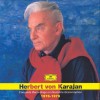



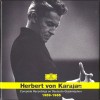
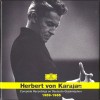

















![Arthur Grumiaux - Philips Recordings 1955-1978 [CD 1 of 6]](http://static.classicalm.com/repository/disk-cover/small/3377-img1391955014458687.jpg)
![Arthur Grumiaux - Philips Recordings 1955-1978 [CD 2 of 6]](http://static.classicalm.com/repository/disk-cover/small/3378-img1391955564204937.jpg)
![Arthur Grumiaux - Philips Recordings 1955-1978 [CD 3 of 6]](http://static.classicalm.com/repository/disk-cover/small/3379-img1392035000124000.jpg)














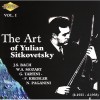


![Anthology of the Royal Concertgebouw Orchestra: Live the Radio Recordings 1960-1970 [CD1]](http://static.classicalm.com/repository/disk-cover/small/3438-img1395217529269136.jpg)


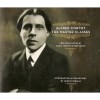










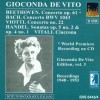








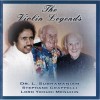
![Casals Festivals at Prades [CD4 of 13]](http://static.classicalm.com/repository/disk-cover/small/3622-img1404992960527388.jpg)
![Casals Festivals at Prades [CD5 of 13]](http://static.classicalm.com/repository/disk-cover/small/3623-img1404993479321250.jpg)
![Casals Festivals at Prades [CD7 of 13]](http://static.classicalm.com/repository/disk-cover/small/3625-img1404996799455193.jpg)


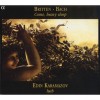


![Janet Baker: ''The Philips & Decca Recordings, 1961 - 1979'' [CD 2 of 5]](http://static.classicalm.com/repository/disk-cover/small/3009-img1371566635344505.jpg)

![J.S. Bach Suites anglaises/English suites BWV 806-811 - Christophe Rousset [CD1 of 2]](http://static.classicalm.com/repository/disk-cover/small/3026-img1372166624318910.jpg)
![J.S. Bach Suites anglaises/English suites BWV 806-811 - Christophe Rousset [CD2 of 2]](http://static.classicalm.com/repository/disk-cover/small/3027-img1372167214764119.jpg)



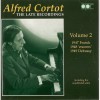




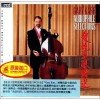















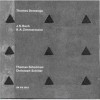











![Otto Klemperer. Bach: Four Orchestral Suites. Handel, Rameau, Gluck, Cherubin [CD 1 of 2]](http://static.classicalm.com/repository/disk-cover/small/2928-img1362077084142003.jpg)
![Otto Klemperer. Bach: Four Orchestral Suites. Handel, Rameau, Gluck, Cherubin [CD 2 of 2]](http://static.classicalm.com/repository/disk-cover/small/2929-img1362079376388009.jpg)


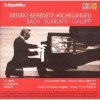










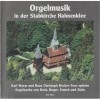








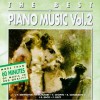




![Andres Segovia. A Centenary Celebration. [CD 1 of 3]](http://static.classicalm.com/repository/disk-cover/small/2962-img1365010036358113.jpg)












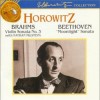


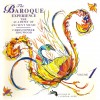


![The Great Violin Concertos (Menuhin Yehudi) [CD 1 of 3]](http://static.classicalm.com/repository/disk-cover/small/3059-img1375715339723978.jpg)














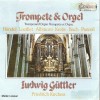
















![Sviatoslav Richter - The Beginning of the Legend [4 CD]](http://static.classicalm.com/repository/disk-cover/small/823-img1315991321531276.jpg)



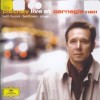





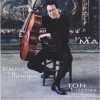
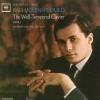


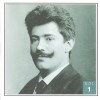














![Richter in Hungary, Volume 1 [2 CD]](http://static.classicalm.com/repository/disk-cover/small/875-img1316349914365481.jpg)
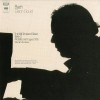

![Richter in Hungary, Volume 5 [2 CD]](http://static.classicalm.com/repository/disk-cover/small/885-img1316383729144080.jpg)





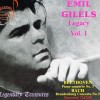



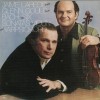







![The Heifetz Collection, Volumes 11 - 15 [5 CD]](http://static.classicalm.com/repository/disk-cover/small/939-img1317071875601277.jpg)




![The Heifetz Collection, Volume 17 [2 CD]](http://static.classicalm.com/repository/disk-cover/small/943-img1317242846317529.jpg)


![The Heifetz Collection, Volume 18 [3 CD]](http://static.classicalm.com/repository/disk-cover/small/945-img1317246561169536.jpg)





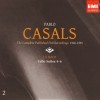



![The Heifetz Collection, Volume 2 [3 CD]](http://static.classicalm.com/repository/disk-cover/small/717-img1315129517717299.jpg)
![The Heifetz Collection, Volume 3 [2 CD]](http://static.classicalm.com/repository/disk-cover/small/719-img1315174118757085.jpg)


![The Heifetz Collection, Volume 6 [2 CD]](http://static.classicalm.com/repository/disk-cover/small/725-img1315427995644122.jpg)




![The Heifetz Collection, Volume 46 [2 CD]](http://static.classicalm.com/repository/disk-cover/small/1001-img1318023469472305.jpg)

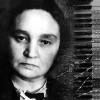









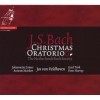




















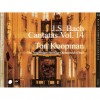
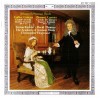
















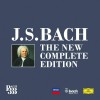


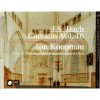





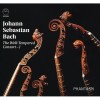





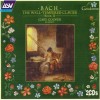












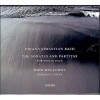


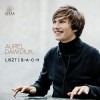






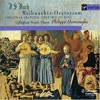






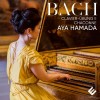


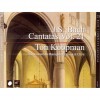
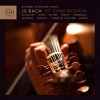











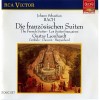








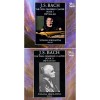
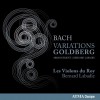

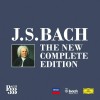










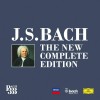

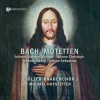













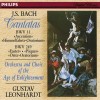


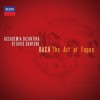
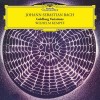
















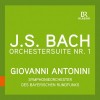














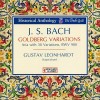

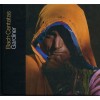







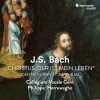






























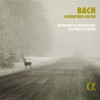
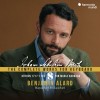




















![Bach - Die Brandenburgische Konzerte [Boyd Neel]](http://static.classicalm.com/repository/composition-cover/small/19483-img1398601508825408.jpg)





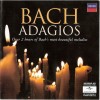



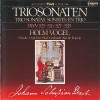




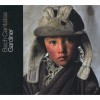










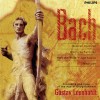



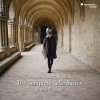





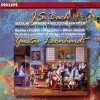

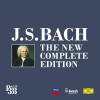






![Bach - Harpsichord Works [8CD's Boxset] - Ton Koopman](http://static.classicalm.com/repository/composition-cover/small/38944-img1582700921667272.jpg)







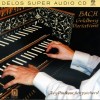
























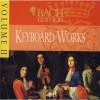

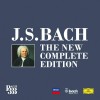

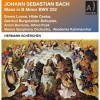










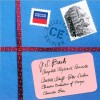



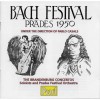





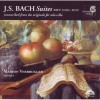





















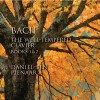


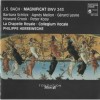
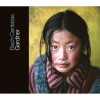


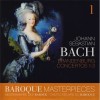








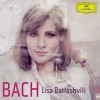



















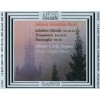






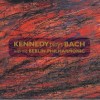


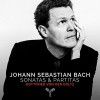
















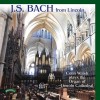









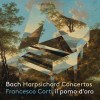







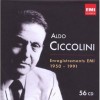




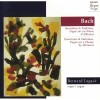




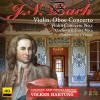
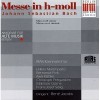

















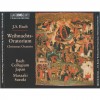






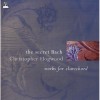







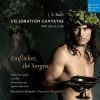



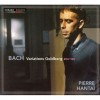











![Bach - Weihnachts-Oratorium, BWV 248 [Jacobs]](http://static.classicalm.com/repository/composition-cover/small/18998-img1394132506633151.jpg)






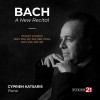








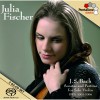

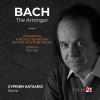























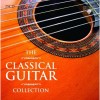






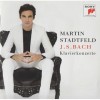




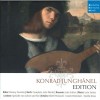



![Die Form - Bach Project [Limited Edition]](http://static.classicalm.com/repository/composition-cover/small/18748-img1392211748390991.jpg)

















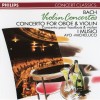











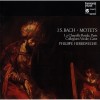





![Bach Edition [Deutsche Harmonia Mundi]](http://static.classicalm.com/repository/composition-cover/small/43328-img1649095445768233.jpg)






















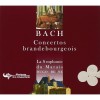













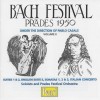











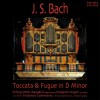

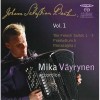
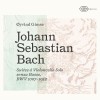





























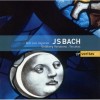



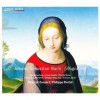




























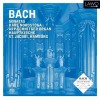



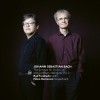





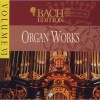








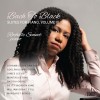















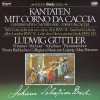




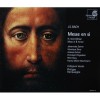









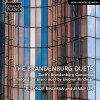


























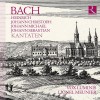












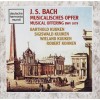





![Elisabeth Schumann - The Complete Bach Recordings [1927-1939]](http://static.classicalm.com/repository/composition-cover/small/19025-img1394451073338108.jpg)









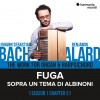












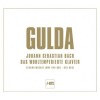







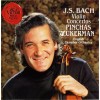


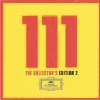

![J.S. Bach - Brandenburg Concertos 1-3, Concerto for Flute BWV 1059 & 35 [The Amsterdam Baroque Orchestra, Ton Koopman]](http://static.classicalm.com/repository/composition-cover/small/19028-img1394453270896701.jpg)







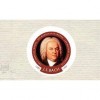



![J.S. Bach - Die Brandenburgische Konzerte 4-6, Orchestral Suite No.2 BWV 1067 [The Amsterdam Baroque Orchestra, Ton Koopman]](http://static.classicalm.com/repository/composition-cover/small/19029-img1394453536429500.jpg)





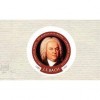









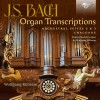








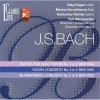
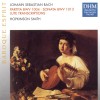



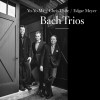




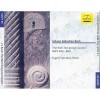








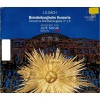















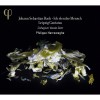




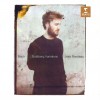


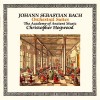


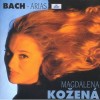






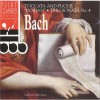











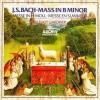






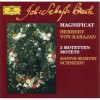



























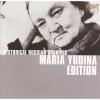


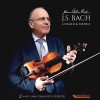











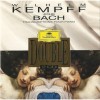






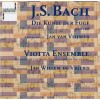








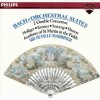



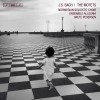
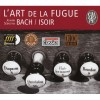

























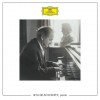

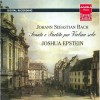





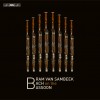









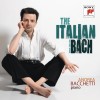



















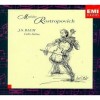




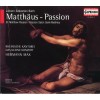

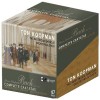
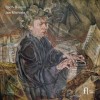

















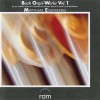








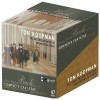



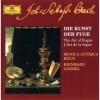








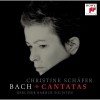





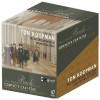



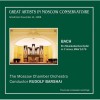






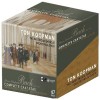













































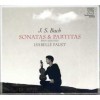


















![Bach - Das Wohltemperierte Klavier - John Butt [192-24]](http://static.classicalm.com/repository/composition-cover/small/42614-img1624061377409355.jpg)

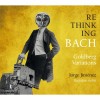















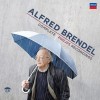




![Bach - Sonatas and Partitas BWV 1001-1006 - Sirkka-Liisa Kaakinen-Pilch [96-24]](http://static.classicalm.com/repository/composition-cover/small/42616-img1624065170277878.jpg)



![Bach - Violin Concertos [Carmignola]](http://static.classicalm.com/repository/composition-cover/small/22905-img1423047808728157.jpg)
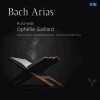
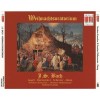


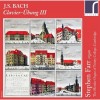












![Bach [Vivaldi] - Harpsichord Extravaganza](http://static.classicalm.com/repository/composition-cover/small/42618-img1624472082285228.jpg)







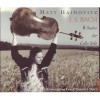










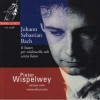
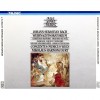



















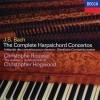











![Bach - Goldberg Variations [arr. J. Koffler] - Agnieszka Duczmal](http://static.classicalm.com/repository/composition-cover/small/42111-img1616511119173955.jpg)



![Bach-Stokowski - Transcriptions [Naxos Historical]](http://static.classicalm.com/repository/composition-cover/small/20608-img1408524580183498.jpg)





































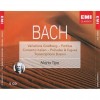

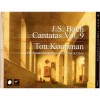
















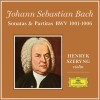

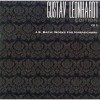













![J. S. Bach - Toccata and Fugue [Ton Koopman]](http://static.classicalm.com/repository/composition-cover/small/18822-img1393354647563542.jpg)




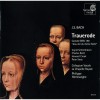





















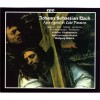
























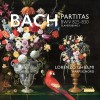





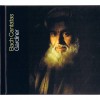














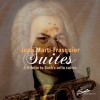

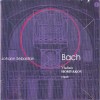























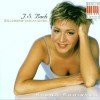
















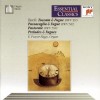








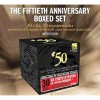





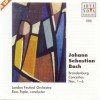







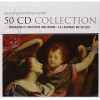











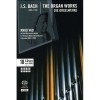







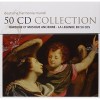
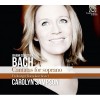





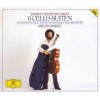














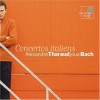







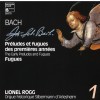

























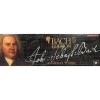



























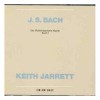









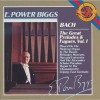





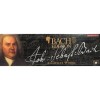



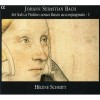










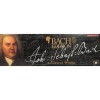















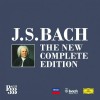








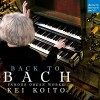


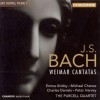

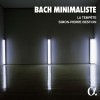














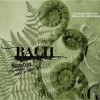











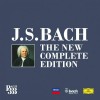


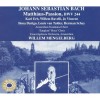
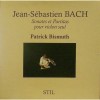
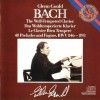












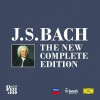




















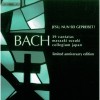






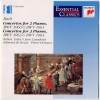

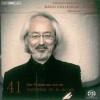



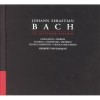










































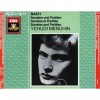

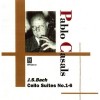










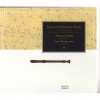






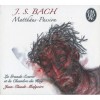










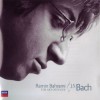



























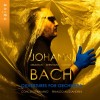








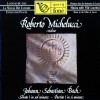
























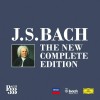













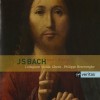
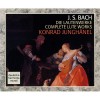











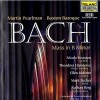
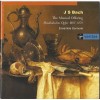





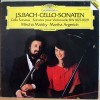










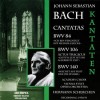
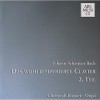


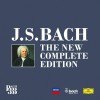























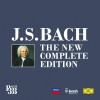

![Bach - Die Kunst der Fuge [2CD's] - Cedric Pescia](http://static.classicalm.com/repository/composition-cover/small/43459-img1654968151594528.jpg)



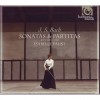










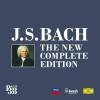






















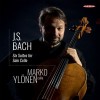












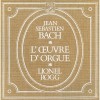



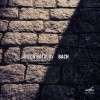


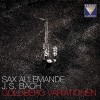




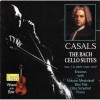























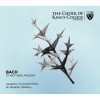





![J.S. Bach - Weihnachts-Oratorium [Eugen Jochum]](http://static.classicalm.com/repository/composition-cover/small/18637-img1391543210279616.jpg)



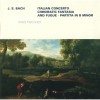
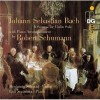















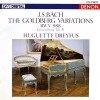


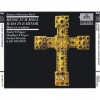

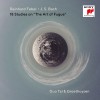




















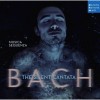








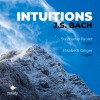






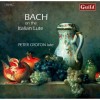




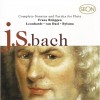



















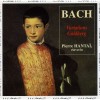

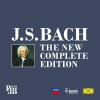












![J.S.Bach - Die Kunst der Fuge [Akademie für Alte Musik Berlin]](http://static.classicalm.com/repository/composition-cover/small/24024-img1432800620792595.jpg)







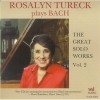
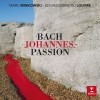


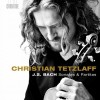












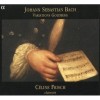



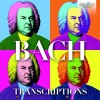

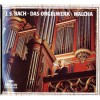












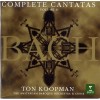





























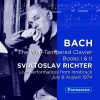

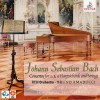







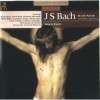



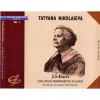





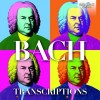











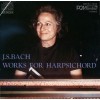






























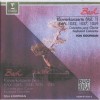


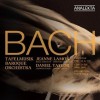

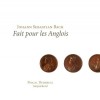
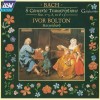




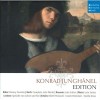






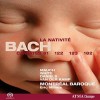








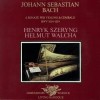



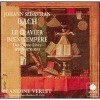






![Bach - Cembalo-conzerte - Karl Munchinger [LP]](http://static.classicalm.com/repository/composition-cover/small/31464-img1513085028721385.jpg)
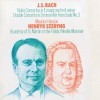

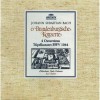







![Bach - Piano Transcriptions Vol.1 [Demidenko]](http://static.classicalm.com/repository/composition-cover/small/21993-img1416827466251099.jpg)


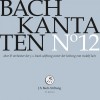






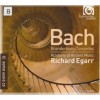














![Bach, J. S. [Gustav Leonhardt] - Complete Harpsichord Concertos](http://static.classicalm.com/repository/composition-cover/small/18668-img1391624927719053.jpg)






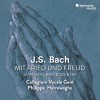

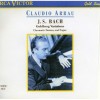























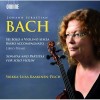

















![Bach - Brandenburg Concertos, Orchestral Suites [Suzuki]](http://static.classicalm.com/repository/composition-cover/small/18929-img1393777814372462.jpg)









![Bach - Brandenburg Concertos, Violin Concertos [Marriner]](http://static.classicalm.com/repository/composition-cover/small/18930-img1393778809767474.jpg)








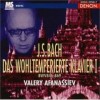










![Bach, Goran Sollscher [1981] 4 Suiten fur Laute](http://static.classicalm.com/repository/composition-cover/small/18676-img1391685014193506.jpg)



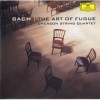

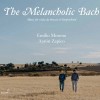

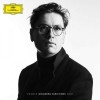









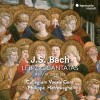




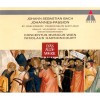


















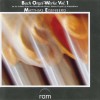





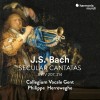















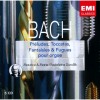

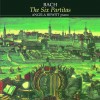



























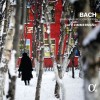
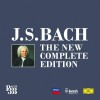









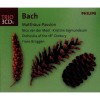












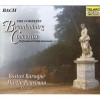

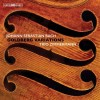









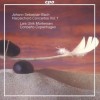
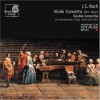


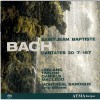
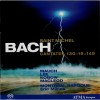







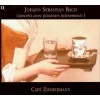



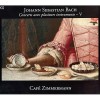

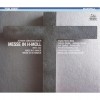


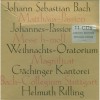
![Weihnachts-Oratorium, BWV 248 [3 CD]](http://static.classicalm.com/repository/composition-cover/small/10817-img1311009179452223.jpg)
![Matthaus Passion [3 CD]](http://static.classicalm.com/repository/composition-cover/small/10809-img1310897061531446.jpg)
![H-moll Messe, BWV 232 [2 CD]](http://static.classicalm.com/repository/composition-cover/small/10815-img1311004257473172.jpg)


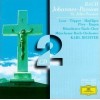



![Klavierbuchlein fur Wilhelm Friedemann (Rousset) [2CD]](http://static.classicalm.com/repository/composition-cover/small/12093-img1318845918624808.jpg)


